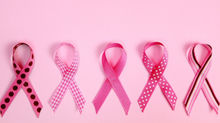Breast Cancer Awareness Month
- Angela Cooper, M. Ed., NBCT
- Oct 24, 2018
- 3 min read

We are in the middle of October which is recognized as Breast Cancer Awareness Month and Life & Wellness Counseling and Consulting, PLLC is proud to participate in National Breast Cancer Awareness Month. Pink ribbons abound everywhere! Let us however, in our pink ribbon wearing, marathon walking, money donating, awareness raising activism,remember the meaning behind the pink. The month of October is by far the most recognized time

for supporting those lives impacted by breast cancer. It’s also time to bump up our own education of breast cancer – symptoms and treatments, share survivor stories, remember those who battle(d), and encourage friends and family members to get their mammograms.
Breast cancer is the most common kind of cancer in women after skin cancer. About 1 in 8 women born today in the United States will get breast cancer at some point. This year alone, it is likely that some 260,000 women will be diagnosed with breast cancer.Think of those statistics – that could be you and

seven of your girlfriends! Breast cancer in men is far less common but it does happen. About 2,550 new cases of invasive breast cancer are expected to be diagnosed in men in this year.
Most women can survive breast cancer if it’s found and treated early. Everyone’s breasts are different and can change with age and at different times of the month.Get to know how your breasts normally look and feel so it will be easier to spot if there are any unusual changes for you. Be

sure to do a self-examination before and after your monthly cycle. If you are a woman age 40 to 49, talk with your doctor about when to start getting mammograms and how often to get them. If you are a woman age 50 to 74, be sure to get a mammogram every 2 years. You may also choose to get them more often.Talk to a doctor about your risk for breast cancer, especially if a close family member of yours had breast or ovarian cancer. Your doctor can help you decide when and how often to get mammograms.
Are you at a greater risk for breast cancer? A variety of factors can increase that risk.
The risk of breast cancer increases with age, particularly after

age 50 and between ages 60 and 69.
Your risk of breast cancer is twice as high if your mother, sister, or daughter has been diagnosed with breast cancer.
Women also have a substantially increased risk of breast cancer if they carry a mutation in one of two genes called BRCA.
Past radiation to treat a previous cancer outside of the breast or to treat acne in adolescence increases your lifetime risk of breast cancer.
Women who took DES, a drug that was prescribed between 1938 and 1971 to help sustain pregnancies, have a higher risk of breast cancer.
Women have a higher risk of breast cancer if they are overweight or obese, particularly after menopause.

Women have a slightly higher risk of breast cancer if they do not have a full-term pregnancy before age 30. However, breast-feeding reduces the risk of breast cancer, especially if done for a year or longer.
Women’s risk of breast cancer is higher later in life if they got their first period before age 12 or did not enter menopause until after age 55.
Drinking alcohol also raises the risk of hormone-receptor- positive breast cancer.
Women with dense breasts may have up to 6 times greater risk of breast cancer.
Women who don’t engage in regular physical exercise are at an increased risk.

Tobacco use increases the risk of breast cancer when women are younger and premenopausal.
White women have a slightly higher risk of breast cancer, followed closely by black women, compared with Latina, Native American or Alaska Native, and Asian or Pacific Islander women. Among women under 45 years old, black women have the highest risk of breast cancer and tend to develop more aggressive, advanced cancer than other diagnosed women under age 50. Black women are also more likely to die from breast cancer than women of other races or ethnicities.
Ways to make a difference:
Participate in a walk to raise $$ for research
Schedule a screening mammogram
Remind friends and family members to get screened
Donate to a local or online charity
Find a local or online volunteer opportunity
Create a gift for someone you know with breast cancer or who is a survivor of breast cancer
There is hope – through continued research and education.

Resources:






.png)

























Comments